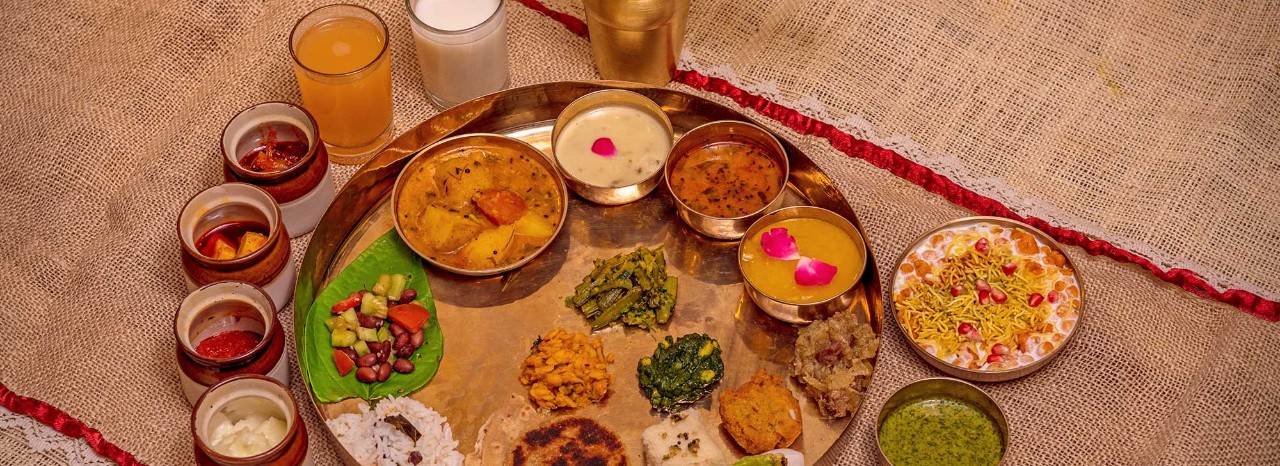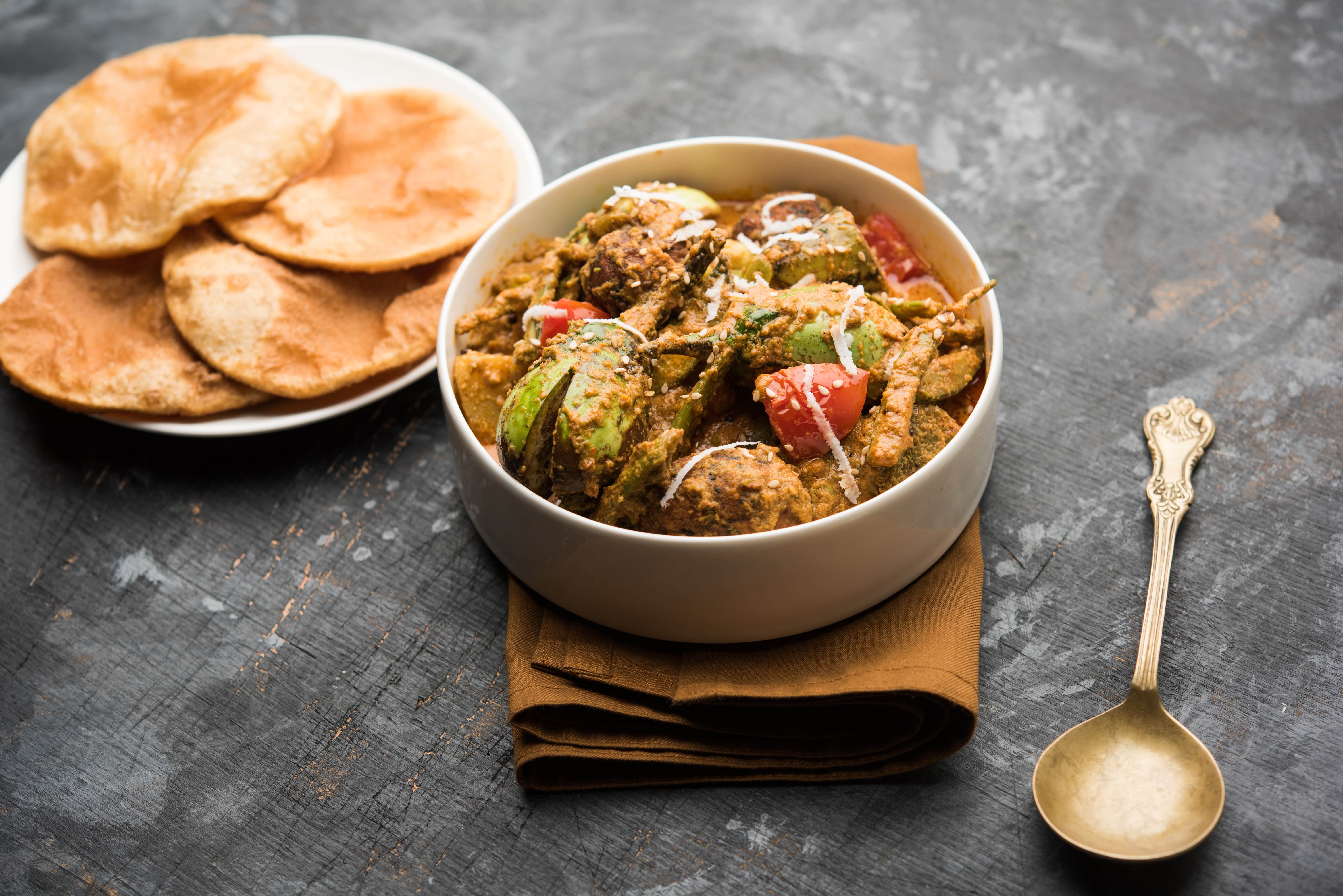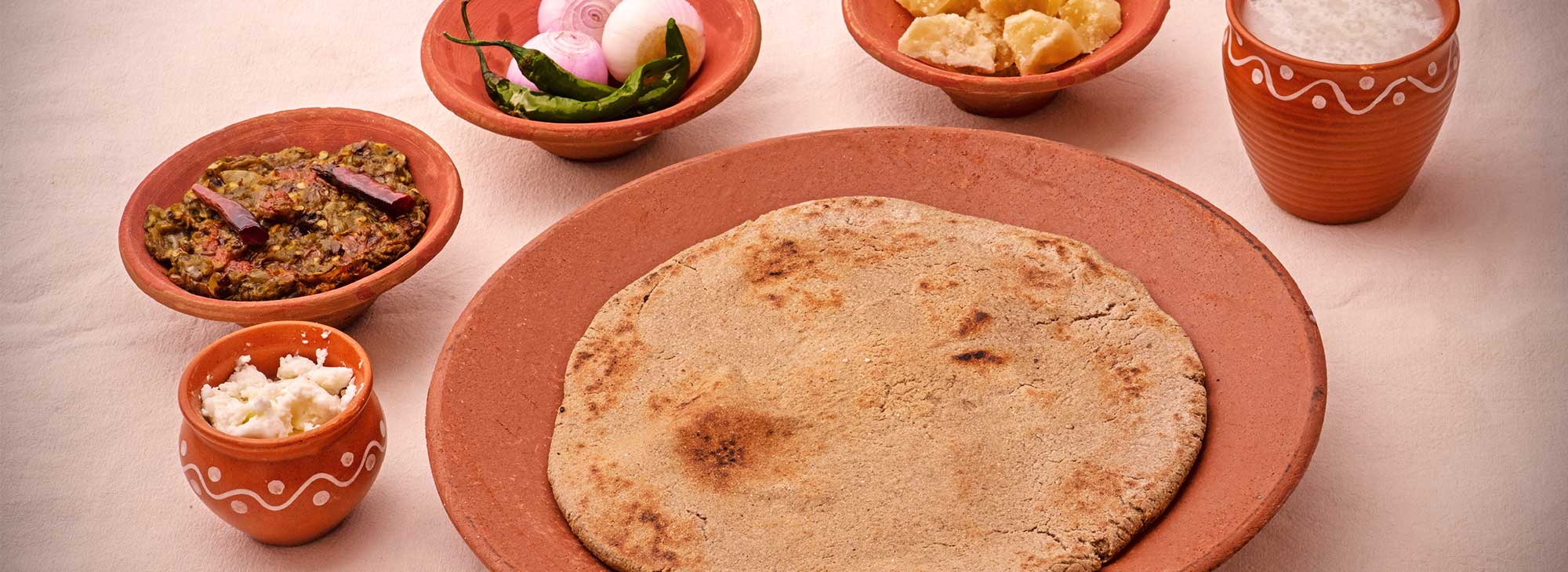A Gujarati thali typically comprises of one or two steamed or fried snacks called farsans, a green vegetable, a tuber or a gourd shaak (shaaks are main courses with vegetables and spices mixed together into a curry or a spicy dry dish), a kathol (braised pulses like beans, chickpea or dry peas), one or more yogurt dishes like dahi, kadhi (yogurt and pulses soup), raita or sweet shrikhand, rice or khichdi, daal usually toor dal, and sweets like halwas, basundi or shrikhand. Accompaniments include sweet, sour and spicy chutneys, pickles, ghee and a salad of chopped vegetables served raw or may be steamed in spices. Much detailing goes into creating a balance of tastes and textures - you could have coarse, grainy, granular, smooth, uniform, dry and wet dishes on the same platter, the sweetness, bitterness, sourness and heat of each main course would vary between dishes, and the thali has more colours than a rainbow – the yellow of turmeric, the whiteness of dairy products, the redness of tomatoes, the green of leafy vegetables, the brown of pulses, and the colours of various spices, relishes and salad vegetables, are harmoniously part of a single thali.
The breads eaten with a thali would include thick and coarse bajra rotla, thin unleavened wheat rotlis, thick and crisp whole wheat flour rotis called Bhakris, parathas, savoury griddle bread called the thepla, deep-fried puris, among others. There are many variations like methi thepla or masala puri within these breads. As Gujaratis are globe-trotters, with a large Gujarati Diaspora overseas and around India as well as being great travellers on holiday or pilgrimage around the world, there are many Gujarati farsans, snacks and mini-meals that are designed to travel and keep well – for instance Khakhras are crisp wafer-like rotis made from wheat, cornflour or lentils that can be carried and eaten with vegetables or accompaniments or dhebras made from a mix of flours can travel better than rotlis.


.png)


